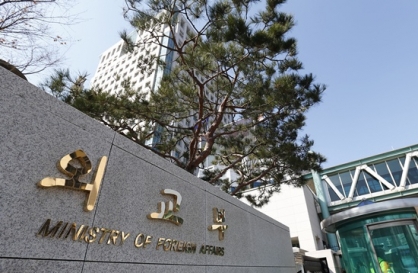Korean football has been in a state of complacency for at least 10 years. Numerous examples of deceit and chicanery in Korean football have been unveiled recently. Korean football has neglected to develop infrastructure in communities and the K-league. Also, K-league players have been found to very frequently partake of match-fixing and illegal gambling.
Moreover, the Korean Football Association has acted in ways that are entirely inscrutable to the general public. For instance, it recently replaced the coach of the national football team, Cho Kwang-rae, without a valid reason. Due to all these problems, supporters of Korean football may not believe in and follow Korean football anymore.
As an ardent devotee of Korean football and an international student who has experienced advanced sports culture in Australia, I would like to propose a fundamental change in the infrastructure of the K-league.
Unsurprisingly, the most popular sport in Korea is football. Therefore, I was influenced tremendously as most of other children in Korea by the football lore surrounding this sport. I have enjoyed football since I was 5. However I had few chances to play football in a proper field. In Korea, only street and sand fields were available to me. The only time when I was able to play football on a proper football lawn in Korea was when my middle school team went to municipality final.
On the other hand, Australia, where I am currently studying, has four football fields. I was at first awed by the grandiose fields, while, much to my initial bemusement, my Australian mates complained that the condition of lawns was not good enough.
The 2011 budget of the Korea Football Association was more than 103 billion won. This is large enough to refine the nation’s football facilities. Nevertheless, the association is reluctant to improve them. There are only 445 proper football lawns in Korea. This number pales in comparison with the demand for football fields. The money is there, but how the money is used remains ambiguous to everyone except those in the small circle of corrupt officials. It is our responsibility to monitor the association’s budget usage.
The national football league, the K-league, has numerous infrastructural problems as well. One of the most salient problems is its stadiums, or, more specifically, the lack of attendees to fill the stadiums.
Throughout the history of Asian football, the K-league has dominated the Asian Champions League, but, ironically, it fails to entice people to come to football stadiums.
In 2011, the average K-league audience was 11,636. Comparably, the J-league attracted 15,194. Such data suggest that there is not much difference between the two leagues. However, the J-league has 18 clubs in division 1 and 15 of them attracted more than 10,000 people, while only six clubs attracted more than 10,000 spectators in the K-league.
An excellent example of the scarcity of audience participation in the K-league can be found in Sungnam-Ilhwa Football Club. Since Sungnam-Ilhwa’s stadium is near my house, I occasionally attend matches to support the club. Even though Sungnam-Ilhwa has won the league seven times, the most successive wins in history among K-league clubs, the club has witnessed the size of its audience shrink every year.
One potential reason for this diminution may be that the stadiums are too big for the league. Each league needs a different size stadium in accordance with the scale of its audience. Compared to Europe, Asia has considerably smaller football leagues. Therefore, they do not need to have extravagantly enormous stadiums.
In fact, most K-league teams simply use the stadiums which were built for the 2002 World Cup. Therefore, the stadiums can accommodate more than 50,000 people, a number disproportionate to the prospective K-league fan base. Supporters and audiences of the K-league hardly experience the fanciful and thrilling moment due to the distant between stand and field. As the K-league’s average audience scale is 10,000, the league needs small stadiums which can convey the exhilarating moments to audience.
On the other side of the world, Australia possesses quite a few mini-sized stadiums. I could spot a number of local stadiums in my town, Brisbane. Once, I went to see the match between local teams in Brisbane. There, the audiences were incredulously engaged and enthusiastic; consequently, they truly enjoyed the game.
A lack of exclusive football stadiums is another possible reason for the dwindling sizes of audiences. Most stadiums in the K-league are synthesized stadiums. As a result, the disparity between the sound of the action of the field and the muffled noise the audience receives in the stands, debars the latter’s active engagement with the former.
Exclusive stadiums, however, provide the perfect view and enormous liveliness to audience as the distance between pitch and stand is only about a few meters. With exclusive stadiums, the K-league would almost certainly undergo a sort of athletic renaissance.
Since I am not an expert in football, I can only offer subjective opinions gleaned from personal experience. However, with these solutions, I strongly believe that football in Korea could be developed significantly.
By Max (Myoung su) Kang
Max (Myoung su) Kang is a student of Brisbane Boys’ College in Brisbane, Australia. ― Ed.
Moreover, the Korean Football Association has acted in ways that are entirely inscrutable to the general public. For instance, it recently replaced the coach of the national football team, Cho Kwang-rae, without a valid reason. Due to all these problems, supporters of Korean football may not believe in and follow Korean football anymore.
As an ardent devotee of Korean football and an international student who has experienced advanced sports culture in Australia, I would like to propose a fundamental change in the infrastructure of the K-league.
Unsurprisingly, the most popular sport in Korea is football. Therefore, I was influenced tremendously as most of other children in Korea by the football lore surrounding this sport. I have enjoyed football since I was 5. However I had few chances to play football in a proper field. In Korea, only street and sand fields were available to me. The only time when I was able to play football on a proper football lawn in Korea was when my middle school team went to municipality final.
On the other hand, Australia, where I am currently studying, has four football fields. I was at first awed by the grandiose fields, while, much to my initial bemusement, my Australian mates complained that the condition of lawns was not good enough.
The 2011 budget of the Korea Football Association was more than 103 billion won. This is large enough to refine the nation’s football facilities. Nevertheless, the association is reluctant to improve them. There are only 445 proper football lawns in Korea. This number pales in comparison with the demand for football fields. The money is there, but how the money is used remains ambiguous to everyone except those in the small circle of corrupt officials. It is our responsibility to monitor the association’s budget usage.
The national football league, the K-league, has numerous infrastructural problems as well. One of the most salient problems is its stadiums, or, more specifically, the lack of attendees to fill the stadiums.
Throughout the history of Asian football, the K-league has dominated the Asian Champions League, but, ironically, it fails to entice people to come to football stadiums.
In 2011, the average K-league audience was 11,636. Comparably, the J-league attracted 15,194. Such data suggest that there is not much difference between the two leagues. However, the J-league has 18 clubs in division 1 and 15 of them attracted more than 10,000 people, while only six clubs attracted more than 10,000 spectators in the K-league.
An excellent example of the scarcity of audience participation in the K-league can be found in Sungnam-Ilhwa Football Club. Since Sungnam-Ilhwa’s stadium is near my house, I occasionally attend matches to support the club. Even though Sungnam-Ilhwa has won the league seven times, the most successive wins in history among K-league clubs, the club has witnessed the size of its audience shrink every year.
One potential reason for this diminution may be that the stadiums are too big for the league. Each league needs a different size stadium in accordance with the scale of its audience. Compared to Europe, Asia has considerably smaller football leagues. Therefore, they do not need to have extravagantly enormous stadiums.
In fact, most K-league teams simply use the stadiums which were built for the 2002 World Cup. Therefore, the stadiums can accommodate more than 50,000 people, a number disproportionate to the prospective K-league fan base. Supporters and audiences of the K-league hardly experience the fanciful and thrilling moment due to the distant between stand and field. As the K-league’s average audience scale is 10,000, the league needs small stadiums which can convey the exhilarating moments to audience.
On the other side of the world, Australia possesses quite a few mini-sized stadiums. I could spot a number of local stadiums in my town, Brisbane. Once, I went to see the match between local teams in Brisbane. There, the audiences were incredulously engaged and enthusiastic; consequently, they truly enjoyed the game.
A lack of exclusive football stadiums is another possible reason for the dwindling sizes of audiences. Most stadiums in the K-league are synthesized stadiums. As a result, the disparity between the sound of the action of the field and the muffled noise the audience receives in the stands, debars the latter’s active engagement with the former.
Exclusive stadiums, however, provide the perfect view and enormous liveliness to audience as the distance between pitch and stand is only about a few meters. With exclusive stadiums, the K-league would almost certainly undergo a sort of athletic renaissance.
Since I am not an expert in football, I can only offer subjective opinions gleaned from personal experience. However, with these solutions, I strongly believe that football in Korea could be developed significantly.
By Max (Myoung su) Kang
Max (Myoung su) Kang is a student of Brisbane Boys’ College in Brisbane, Australia. ― Ed.




![[Weekender] Korean psyche untangled: Musok](http://res.heraldm.com/phpwas/restmb_idxmake.php?idx=644&simg=/content/image/2024/05/02/20240502050841_0.jpg&u=)

![[Eye Interview] 'If you live to 100, you might as well be happy,' says 88-year-old bestselling essayist](http://res.heraldm.com/phpwas/restmb_idxmake.php?idx=644&simg=/content/image/2024/05/03/20240503050674_0.jpg&u=)










![[Herald Interview] Director of 'Goodbye Earth' aimed to ask how we would face apocalypse](http://res.heraldm.com/phpwas/restmb_idxmake.php?idx=652&simg=/content/image/2024/05/03/20240503050732_0.jpg&u=)
